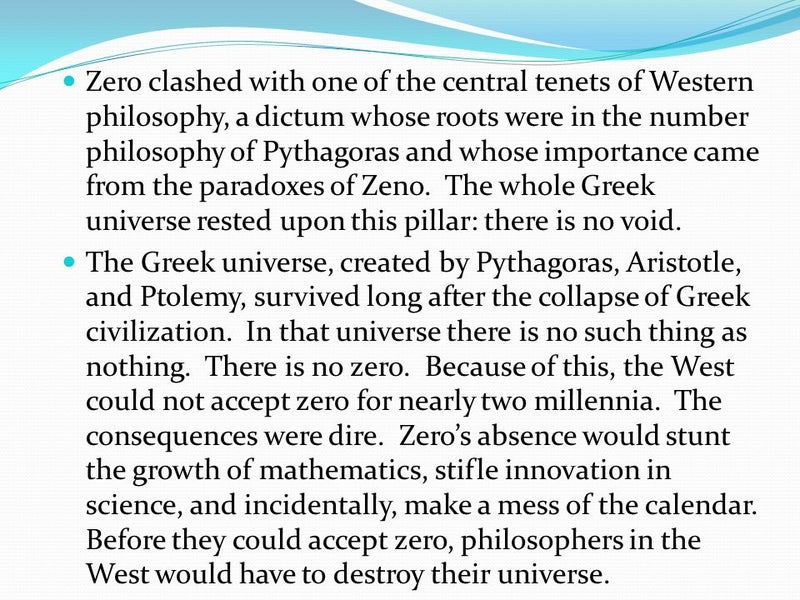CULTURE-HERITAGE
Roots of Indian Science: Part D – Indian Science During the Colonial Era
In this part of “Roots of Indian Science”, we discuss the growth of Indian science, particularly astronomy, during the colonial rule.
Abstract:
Starting with Vedic texts that sowed seeds of science in India, Aryabhata and Bhaskaracharya further developed it by mathematically interpreting various scientific phenomena and events occurring in nature. Thereafter Indian science did not advance at the same pace, partly due to unfavourable political environment prevailing in the country arising from frequent foreign invasions, starting with the Mughals, followed by Portuguese, French and the British.
In this part of the series on “Roots of Indian Science”, we discuss the growth of Indian science, particularly astronomy, during the colonial rule.
4.1 Introduction:
The foreign invasions of India started with Babur’s victory over Ibrahim Lodi in the first Battle of Panipat (1526) which established the Mughal rule in India. It reached its peak extent under Aurangzeb and declined rapidly after his death (in 1707) under a series of ineffective rulers. Following the Third Anglo-Maratha war in 1818, the Mughal emperor became a pensioner of the British Raj. The Mughal empire, with its power limited only to Delhi, lingered on until 1857 when it was effectively dissolved consequent upon the fall of Delhi after the failed Indian Mutiny of 1857.
The Mughal rulers encouraged Indians to pursue their scientific interests. Sawai Jai Singh of Jaipur constructed his edifices in the form of astronomical observatories located at Mathura, Ujjain, Varanasi, Delhi, and Jaipur. He made astronomical observations and published his results in his book “Zij-e-Muhammad Shahi” dedicated to his Mughal Sultan.
Colonial traders from European countries started arriving in India towards the end of 15th century. Portuguese followed by British, Dutch and finally, the French arrived in India in the name of trade. However, they soon developed political ambitions in view of unstable political environment prevailing in the country due to lack of unity and infighting among the rulers of various princely states in India. However, with their approach to addressing real-life problems by employing scientific methods developed in the west, the Indian science got a boost. The colonial contributions to India’s development are significant, despite some negative aspects of their rule, viz. suppression of political freedom, imprisoning and even killing of the innocent population who challenged their authority and syphoning off the wealth as well as precious treasures of the country to their native countries.
By and large, the colonial regime did not encourage Indians to pursue independent scientific research but they were mostly hired to play supporting roles in projects that were deemed economically rewarding to the colonial regime. However, the exposure of Indians to western science and technology by interaction with foreign scientists who were invited to come to India to head these projects started by the colonial regime proved beneficial for the growth of Indian science in the long run. Some of these foreign scientists were eminent in their own fields and the Indian scientists associated with them received good training to eventually lead these projects after the end of the colonial rule in India.
4.18 Conclusions:
The colonial regime in India initiated research in many areas, particularly those which were deemed financially rewarding to the regime. Despite the usual criticism of the colonial rulers of being partial to Indian scientists involved in these projects in terms of their academic role as well as career growth, the Indian science, particularly observational astronomy and solar physics which are dependent on use of technology, got a fillip due to bringing in state of art technology developed in the west to India by the British and French scientists who were invited by the regime to initiate and lead these projects. Some of the fundamental discoveries in the field of astronomy and solar physics were made from the Indian soil by scientists working on these projects.
4.19 References
[1] Shekhar Narvekar, Astronomy Instrumentation in Ancient India,
http://oldthoughts.files.wordpress.com/2009/04/astroinstru.pdf
[2] Bhaskarachārya, http://veda.wikidot.com/bhaskaracharya
[3] Parameshvara, from Wikipedia, the free encyclopedia,
http://en.wikipedia.org/wiki/Parameshvara
[4] Eclipse observations of Parmeshvara, the 14-15 century astronomer of Kerala,
Indian Journal of History of Science 38.1, 2003, 43-57
[5] Zij al-Sindhind, From Wikipedia, the free encyclopedia
http://en.wikipedia.org/wiki/Zij_al-Sindhind
[6] Rajesh Kochhar and Jayant Narlikar (1995), Astronomy in India: A Perspective (New
Delhi: Indian National Science Academy), Chapter-1
http://rajeshkochhar.com/data/books/history.pdf
[7] Jayant V Narlikar, The Scientific Edge, Pengiun, Page-61.Year 2003
[8] Anand M. Sharan, The Construction Times of Sawai Jai Singh’s Observatories ,
Faculty of Engineering, Memorial University, St. John’s, Newfoundland, Canada A1B
3X5.
[9] V A Smith, Jantar Mantar, Greenage Books, 2011
[10] Ulugh Beg Observatory
Wikipedia, the free encyclopedia, http://en.wikipedia.org/wiki/Ulugh_Beg_Observatory
[11] Wikipedia, the free encyclopedia,
http://en.wikipedia.org/wiki/French_India
[12] N Kameswara Rao, A Vagiswari and Christina Louis, Father J Richaud and early
Telescope observations in India, Bulletin of Astr. Soc. India (1984), Vol-12, Page 81
[13] R. K Kochhar, French astronomers in India during the 17th – 19th centuries, Journal of
the British Astronomical Association, vol.101, no.2, Page-95-100
http://articles.adsabs.harvard.edu/full/seri/JBAA./0101//0000101.000.html
[14] History of Sciece and Technology, http://www.saburchill.com/HOS/astronomy/031.html
[15] R. K. Kochhar, The Growth of Modern Astronomy in India, 1651-1960
Indian Institute of Astrophysics, Bangalore 560034, India,
rajeshkochhar.com/data/publications/vistas_in_astronomy
[16] A. Raman, Looking back: Goldingham and the Madras Observatory
http://madrasmusings.com/Vol%2022%20No%207/looking-back.html
[17] http://www.chennaibest.com/discoverchennai/sightseeing/madrasobservatory.asp
[18] C K Ananthasubramanium, The Madras Observatory, 1792-1931, Journal of the Royal
Astronomical Society of Canada, Vol. 85, NO. 2:629/APRI, P. 97, 1991
http://adsabs.harvard.edu/full/1991JRASC.85…97A
[19] MKV Bappu, http://prints.iiap.res.in/bitstream/2248/1701/3/akd4.pdf
[20] A. L. Narayan, Wikipedia, the free encyclopedia
http://en.wikipedia.org/wiki/A._L._Narayan
[21] S. S. Hasan, D.C.V. Mallik, S. P. Bagare & S. P. Rajaguru, Solar physics at the
Kodaikanal Observatory: A Historical Perspective, Indian Institute of Astrophysics,
Bangalore, http://arxiv.org/pdf/0906.0144.pdf
[22] Deepak Kumar, Patterns of Colonial Science in India, Indian J. of History of
Science, 15(1), 105-113, May 1980.
http://oldthoughts.files.wordpress.com/2009/04/astroinstru.pdf
[2] Bhaskarachārya, http://veda.wikidot.com/bhaskaracharya
[3] Parameshvara, from Wikipedia, the free encyclopedia,
http://en.wikipedia.org/wiki/Parameshvara
[4] Eclipse observations of Parmeshvara, the 14-15 century astronomer of Kerala,
Indian Journal of History of Science 38.1, 2003, 43-57
[5] Zij al-Sindhind, From Wikipedia, the free encyclopedia
http://en.wikipedia.org/wiki/Zij_al-Sindhind
[6] Rajesh Kochhar and Jayant Narlikar (1995), Astronomy in India: A Perspective (New
Delhi: Indian National Science Academy), Chapter-1
http://rajeshkochhar.com/data/books/history.pdf
[7] Jayant V Narlikar, The Scientific Edge, Pengiun, Page-61.Year 2003
[8] Anand M. Sharan, The Construction Times of Sawai Jai Singh’s Observatories ,
Faculty of Engineering, Memorial University, St. John’s, Newfoundland, Canada A1B
3X5.
[9] V A Smith, Jantar Mantar, Greenage Books, 2011
[10] Ulugh Beg Observatory
Wikipedia, the free encyclopedia, http://en.wikipedia.org/wiki/Ulugh_Beg_Observatory
[11] Wikipedia, the free encyclopedia,
http://en.wikipedia.org/wiki/French_India
[12] N Kameswara Rao, A Vagiswari and Christina Louis, Father J Richaud and early
Telescope observations in India, Bulletin of Astr. Soc. India (1984), Vol-12, Page 81
[13] R. K Kochhar, French astronomers in India during the 17th – 19th centuries, Journal of
the British Astronomical Association, vol.101, no.2, Page-95-100
http://articles.adsabs.harvard.edu/full/seri/JBAA./0101//0000101.000.html
[14] History of Sciece and Technology, http://www.saburchill.com/HOS/astronomy/031.html
[15] R. K. Kochhar, The Growth of Modern Astronomy in India, 1651-1960
Indian Institute of Astrophysics, Bangalore 560034, India,
rajeshkochhar.com/data/publications/vistas_in_astronomy
[16] A. Raman, Looking back: Goldingham and the Madras Observatory
http://madrasmusings.com/Vol%2022%20No%207/looking-back.html
[17] http://www.chennaibest.com/discoverchennai/sightseeing/madrasobservatory.asp
[18] C K Ananthasubramanium, The Madras Observatory, 1792-1931, Journal of the Royal
Astronomical Society of Canada, Vol. 85, NO. 2:629/APRI, P. 97, 1991
http://adsabs.harvard.edu/full/1991JRASC.85…97A
[19] MKV Bappu, http://prints.iiap.res.in/bitstream/2248/1701/3/akd4.pdf
[20] A. L. Narayan, Wikipedia, the free encyclopedia
http://en.wikipedia.org/wiki/A._L._Narayan
[21] S. S. Hasan, D.C.V. Mallik, S. P. Bagare & S. P. Rajaguru, Solar physics at the
Kodaikanal Observatory: A Historical Perspective, Indian Institute of Astrophysics,
Bangalore, http://arxiv.org/pdf/0906.0144.pdf
[22] Deepak Kumar, Patterns of Colonial Science in India, Indian J. of History of
Science, 15(1), 105-113, May 1980.
…
Disclaimer: The facts and opinions expressed in this article are strictly the personal opinions of the authors. League of India does not assume any responsibility or liability for the accuracy, completeness, suitability, or validity of any information in this article.
This article was first published in the journal ‘Laboratory Experiments‘, published by Kamaljeeth Instrumentation and Service Unit, Bengaluru, India.
とても興味深く読みました:
ゼロ除算の発見と重要性を指摘した:日本、再生核研究所
再生核研究所声明357(2017.2.17)Brahmagupta の名誉回復と賞賛を求める。
再生核研究所声明 339で 次のように述べている:
世界史と人類の精神の基礎に想いを致したい。ピタゴラスは 万物は数で出来ている、表されるとして、数学の重要性を述べているが、数学は科学の基礎的な言語である。ユークリッド幾何学の大きな意味にも触れている(再生核研究所声明315(2016.08.08) 世界観を大きく変えた、ユークリッドと幾何学)。しかしながら、数体系がなければ、空間も幾何学も厳密には 表現することもできないであろう。この数体系の基礎はブラーマグプタ(Brahmagupta、598年 – 668年?)インドの数学者・天文学者によって、628年に、総合的な数理天文書『ブラーマ・スプタ・シッダーンタ』(ब्राह्मस्फुटसिद्धान्त Brāhmasphuṭasiddhānta)の中で与えられ、ゼロの導入と共に四則演算が確立されていた。ゼロの導入、負の数の導入は数学の基礎中の基礎で、西欧世界がゼロの導入を永い間嫌っていた状況を見れば、これらは世界史上でも顕著な事実であると考えられる。最近ゼロ除算は、拡張された割り算、分数の意味で可能で、ゼロで割ればゼロであることが、その大きな影響とともに明らかにされてきた。しかしながら、 ブラーマグプタは その中で 0 ÷ 0 = 0 と定義していたが、奇妙にも1300年を越えて、現在に至っても 永く間違いであるとされている。現在でも0 ÷ 0について、幾つかの説が存在していて、現代数学でもそれは、定説として 不定であるとしている。最近の研究の成果で、ブラーマグプタの考えは 実は正しかった ということになる。 しかしながら、一般の ゼロ除算については触れられておらず、永い間の懸案の問題として、世界を賑わしてきた。現在でも議論されている。ゼロ除算の永い歴史と問題は、次のアインシュタインの言葉に象徴される:
Blackholes are where God divided by zero. I don't believe in mathematics. George Gamow (1904-1968) Russian-born American nuclear physicist and cosmologist re-
marked that "it is well known to students of high school algebra" that division by zero is not valid; and Einstein admitted it as the biggest blunder of his life [1] 1. Gamow, G., My World Line (Viking, New York). p 44, 1970.
物理学や計算機科学で ゼロ除算は大事な課題であるにも関わらず、創始者の考えを無視し、割り算は 掛け算の逆との 貧しい発想で 間違いを1300年以上も、繰り返してきたのは 実に残念で、不名誉なことである。創始者は ゼロの深い意味、ゼロが 単純な算数・数学における意味を越えて、ゼロが基準を表す、不可能性を表現する、神が最も簡単なものを選択する、神の最小エネルギーの原理、すなわち、神もできれば横着したいなどの世界観を感じていて、0/0=0 を自明なもの と捉えていたものと考えられる。実際、巷で、ゼロ除算の結果や、適用例を語ると 結構な 素人の人々が 率直に理解されることが多い。
1300年間も 創始者の結果が間違いであるとする 世界史は修正されるべきである、間違いであるとの不名誉を回復、数学の基礎の基礎である算術の確立者として、世界史上でも高く評価されるべきである。 真智の愛、良心から、厚い想いが湧いてくる。
以 上
追記
The division by zero is uniquely and reasonably determined as 1/0=0/0=z/0=0 in the natural extensions of fractions. We have to change our basic ideas for our space and world:
http://www.scirp.org/journal/alamt http://dx.doi.org/10.4236/alamt.2016.62007
http://www.ijapm.org/show-63-504-1.html
http://www.diogenes.bg/ijam/contents/2014-27-2/9/9.pdf
http://www.scirp.org/journal/alamt http://dx.doi.org/10.4236/alamt.2016.62007
http://www.ijapm.org/show-63-504-1.html
http://www.diogenes.bg/ijam/contents/2014-27-2/9/9.pdf
再生核研究所声明371(2017.6.27)ゼロ除算の講演― 国際会議 https://sites.google.com/site/sandrapinelas/icddea-2017 報告
http://ameblo.jp/syoshinoris/theme-10006253398.html
1/0=0、0/0=0、z/0=0
http://ameblo.jp/syoshinoris/entry-12276045402.html
1/0=0、0/0=0、z/0=0
http://ameblo.jp/syoshinoris/entry-12263708422.html
1/0=0、0/0=0、z/0=0
http://ameblo.jp/syoshinoris/entry-12272721615.html
再生核研究所声明339(2016.12.26)インドの偉大な文化遺産、ゼロ及び算術の発見と仏教
世界史と人類の精神の基礎に想いを致したい。ピタゴラスは 万物は数で出来ている、表されるとして、数学の重要性を述べているが、数学は科学の基礎的な言語である。ユークリッド幾何学の大きな意味にも触れている(再生核研究所声明315(2016.08.08) 世界観を大きく変えた、ユークリッドと幾何学)。しかしながら、数体系がなければ、空間も幾何学も厳密には 表現することもできないであろう。この数体系の基礎はブラーマグプタ(Brahmagupta、598年 – 668年?)インドの数学者・天文学者によって、628年に、総合的な数理天文書『ブラーマ・スプタ・シッダーンタ』(ब्राह्मस्फुटसिद्धान्त Brāhmasphuṭasiddhānta)の中で与えられ、ゼロの導入と共に四則演算が確立されていた。ゼロの導入、負の数の導入は数学の基礎中の基礎で、西欧世界がゼロの導入を永い間嫌っていた状況を見れば、これらは世界史上でも顕著な事実であると考えられる。最近ゼロ除算は、拡張された割り算、分数の意味で可能で、ゼロで割ればゼロであることが、その大きな影響とともに明らかにされてきた。しかしながら、 ブラーマグプタはその中で 0 ÷ 0 = 0 と定義していたが、奇妙にも1300年を越えて、現在に至っても 永く間違いであるとしてされている。現在でも0 ÷ 0について、幾つかの説が存在していて、現代数学でもそれは、定説として 不定であるとしている。最近の研究の成果で、ブラーマグプタの考えは 実は正しかった ということになる。 しかしながら、一般の ゼロ除算については触れられておらず、永い間の懸案の問題として、世界を賑わしてきた。現在でも議論されている。ゼロ除算の永い歴史と問題は、次のアインシュタインの言葉に象徴される:
Blackholes are where God divided by zero. I don't believe in mathematics. George Gamow (1904-1968) Russian-born American nuclear physicist and cosmologist re-
marked that "it is well known to students of high school algebra" that division by zero is not valid; and Einstein admitted it as the biggest blunder of his life [1] 1. Gamow, G., My World Line (Viking, New York). p 44, 1970.
· 愛別離苦(あいべつりく) - 愛する者と別離すること
· 怨憎会苦(おんぞうえく) - 怨み憎んでいる者に会うこと
· 求不得苦(ぐふとくく) - 求める物が得られないこと
の四つの苦に対する人間の在り様の根本を問うた仏教の教えは人類普遍の教えであり、命あるものの共生、共感、共鳴の精神を諭されたと理解される。人生の意義と生きることの基本を真摯に追求された教えと考えられる。アラブや西欧の神の概念に直接基づく宗教とは違った求道者、修行者の昇華された世界を見ることができ、お釈迦様は人類普遍の教えを諭されていると考える。
これら2点は、インドの誠に偉大なる、世界史、人類における文化遺産である。我々はそれらの偉大な文化を尊崇し、数理科学にも世界の問題にも大いに活かして行くべきであると考える。 数理科学においては、十分に発展し、生かされているので、仏教の教えの方は、今後世界的に広められるべきであると考える。仏教はアラブや欧米で考えられるような意味での宗教ではなく、 哲学的、学術的、修行的であり、上記宗教とは対立するものではなく、広く活かせる教えであると考える。世界の世相が悪くなっている折り、仏教は世界を救い、世界に活かせる基本的な精神を有していると考える。
ちなみに、ゼロは 空や無の概念と通じ、仏教の思想とも深く関わっていることに言及して置きたい。 いみじくも高度に発展した物理学はそのようなレベルに達していると報じられている。この観点で、歴史的に永い間、ゼロ自身の西欧社会への導入が異常に遅れていた事実と経過は 大いに気になるところである。
以 上
The division by zero is uniquely and reasonably determined as 1/0=0/0=z/0=0 in the natural extensions of fractions. We have to change our basic ideas for our space and world:
http://www.scirp.org/journal/alamt http://dx.doi.org/10.4236/alamt.2016.62007
http://www.ijapm.org/show-63-504-1.html
http://www.diogenes.bg/ijam/contents/2014-27-2/9/9.pdf
http://www.scirp.org/journal/alamt http://dx.doi.org/10.4236/alamt.2016.62007
http://www.ijapm.org/show-63-504-1.html
http://www.diogenes.bg/ijam/contents/2014-27-2/9/9.pdf
Announcement 326: The division by zero z/0=0/0=0 - its impact to human beings through education and research
再生核研究所声明311(2016.07.05) ゼロ0とは何だろうか
ここ2年半、ゼロで割ること、ゼロ除算を考えているが、ゼロそのものについてひとりでに湧いた想いがあるので、その想いを表現して置きたい。
数字のゼロとは、実数体あるいは複素数体におけるゼロであり、四則演算で、加法における単位元(基準元)で、和を考える場合、何にゼロを加えても変わらない元として定義される。積を考えて変わらない元が数字の1である:
Wikipedia:ウィキペディア:
初等代数学[編集]
数の 0 は最小の非負整数である。0 の後続の自然数は 1 であり、0 より前に自然数は存在しない。数 0 を自然数に含めることも含めないこともあるが、0 は整数であり、有理数であり、実数(あるいは代数的数、複素数)である。
以下は数 0 を扱う上での初等的な決まりごとである。これらの決まりはxを任意の実数あるいは複素数として適用して構わないが、それ以外の場合については何も言及していないということについては理解されなければならない。
加法:x + 0 = 0 +x=x. つまり 0 は加法に関する単位元である。
減法: x− 0 =x, 0 −x= −x.
乗法:x 0 = 0 ·x= 0.
除法:xが 0 でなければ0⁄x= 0 である。しかしx⁄0は、0 が乗法に関する逆元を持たないために、(従前の規則の帰結としては)定義されない(ゼロ除算を参照)。
実数の場合には、数直線で、複素数の場合には複素平面を考えて、すべての実数や複素数は直線や平面上の点で表現される。すなわち、座標系の導入である。
これらの座標系が無ければ、直線や平面はただ伸びたり、拡がったりする空間、位相的な点集合であると考えられるだろう。― 厳密に言えば、混沌、幻のようなものである。単に伸びたり、広がった空間にゼロ、原点を対応させるということは 位置の基準点を定めること と考えられるだろう。基準点は直線や平面上の勝手な点にとれることに注意して置こう。原点だけでは、方向の概念がないから、方向の基準を勝手に決める必要がある。直線の場合には、直線は点で2つの部分に分けられるので、一方が正方向で、他が負方向である。平面の場合には、原点から出る勝手な半直線を基準、正方向として定めて、原点を回る方向を定めて、普通は時計の回りの反対方向を 正方向と定める。これで、直線や平面に方向の概念が導入されたが、さらに、距離(長さ)の単位を定めるため、原点から、正方向の点(これも勝手に指定できる)を1として定める。実数の場合にも複素数の場合にも数字の1をその点で表す。以上で、位置、方向、距離の概念が導入されたので、あとはそれらを基礎に数直線や複素平面(座標)を考える、すなわち、直線と実数、平面と複素数を1対1に対応させる。これで、実数も複素数も秩序づけられ、明瞭に表現されたと言える。ゼロとは何だろうか、それは基準の位置を定めることと発想できるだろう。
― 国家とは何だろうか。国家意思を定める権力機構を定め、国家を動かす基本的な秩序を定めることであると原理を述べることができるだろう。
数直線や複素平面では 基準点、0と1が存在する。これから数学を展開する原理を下記で述べている:
しかしながら、数学について、そもそも数学とは何だろうかと問い、ユニバースと数学の関係に思いを致すのは大事ではないだろうか。この本質論については幸運にも相当に力を入れて書いたものがある:
19/03/2012
ここでは、数学とは何かについて考えながら、数学と人間に絡む問題などについて、幅.広く面白く触れたい。
複素平面ではさらに大事な点として、純虚数i が存在するが、ゼロ除算の発見で、最近、明確に認識された意外な点は、実数の場合にも、複素数の場合にも、ゼロに対応する点が存在するという発見である。ゼロに対応する点とは何だろうか?
直線や平面で実数や複素数で表されない点が存在するであろうか? 無理して探せば、いずれの場合にも、原点から無限に遠ざかった先が気になるのではないだろうか? そうである立体射影した場合における無限遠点が正しくゼロに対応する点ではないかと発想するだろう。その美しい点は無限遠点としてその美しさと自然さ故に100年を超えて数学界の定説として揺るぐことはなかった。ゼロに対応する点は無限遠点で、1/0=∞ と考えられてきた。オイラー、アーベル、リーマンの流れである。
ところが、ゼロ除算は1/0=0 で、実は無限遠点はゼロに対応していることが確認された。
直線を原点から、どこまでも どこまでも遠ざかって行くと、どこまでも行くが、その先まで行くと(無限遠点)突然、ゼロに戻ることを示している。これが数学であり、我々の空間であると考えられる。この発見で、我々の数学の結構な部分が修正、補充されることが分かりつつある。
ゼロ除算は可能であり、我々の空間の認識を変える必要がある。ゼロで割る多くの公式である意味のある世界が広がってきた。それらが 幾何学、解析学、代数学などと調和して数学が一層美しい世界であることが分かってきた。
全ての直線はある意味で、原点、基準点を通ることが示されるが、これは無限遠点の影が投影されていると解釈され、原点はこの意味で2重性を有している、無限遠点と原点が重なっている現象を表している。この2重性は 基本的な指数関数y=e^x が原点で、0 と1 の2つの値をとると表現される。このことは、今後大きな意味を持ってくるだろう。
古来、ゼロと無限の関係は何か通じていると感じられてきたが、その意味が、明らかになってきていると言える。
2点から無限に遠い点 無限遠点は異なり、無限遠点は基準点原点の指定で定まるとの認識は面白く、大事ではないだろうか。
以 上
再生核研究所声明 420(2018.3.2): ゼロ除算は正しいですか,合っていますか、信用できますか - 回答
ゼロ除算に 興味を抱いている方の 率直な 疑念です。大きな国際会議で、感情的になって 現代の数学を破壊するもので 全く認められないと発言された方がいる。現代初等数学には基本的な欠陥があって、我々の空間の認識は ユークリッド以来の修正が求められ、初等数学全般の再構成が要求されていると述べている。それで、もちろん、慎重に 慎重に対応しているのは当然である。
本来 数学者は 論理に厳格で 数学の世界ほど 間違えの無い世界は無いと言えるのではないだろうか。 実際、一人前の数学者とは、独自の価値観を有し、論理的な間違いはしない者である と考えられているのではないだろうか。2000年を越える超古典的な数学に反した 新しい世界が現れたので、異常に慎重になり、大丈夫か大丈夫かと4年間を越えて反芻して来た(再生核研究所声明 411(2018.02.02): ゼロ除算発見4周年を迎えて)。 そこで、ゼロ除算の成果における信頼性を客観的に 疑念に対する回答として纏めて置こう。これらは、貴重な記録になると考えられる。
まず、研究成果は 3年半を越えて、広く公開している:
数学基礎学力研究会 サイトで解説が続けられている:http://www.mirun.sctv.jp/~suugaku/
また、ohttp://okmr.yamatoblog.net/ に 関連情報を公開している。
ゼロ除算の研究は、内外の研究者に意見を求められながら共同で進め、12編を越える論文を出版確定にしている。日本数学会では6期3年間を越えて関係講演を行い、成果を発表して来た。 またその際、ゼロ除算の解説冊子(2015.1.14付け)を1000部以上広く配布して意見を求めてきたが、論理的な不備などはどこからも指摘されていない。ここ4年間海外の関係専門家と250以上のメールで議論してきた(ある人がそう述べてきた:2018年2月27日 18:45 Since then I have received about 250 messages from you about it. Unbelievable! :2018年2月27日 18:45)が 論理的な不備は指摘されなく、関係者の諒解(理解)が付いていると判断されている。逆に他の理論については 全て具体的に批判し、良くないと述べている。50カ国200名以上参加の大きな国際会議に 全体講演者として招待され、講演を行い、かつ論文がその会議禄に2編Springer社から出版される。公開していたゼロ除算の総合的な研究著書原案154ページに対して、イギリスの出版社が出版を勧め、外部審査、社内審査を終えて、著書の出版を決定している。
ゼロ除算を裏付ける知見は 初等数学全般から700件を超え、公開している。共著者として論文執筆に参加している人は、代表者以外内外8名である。
以上の状況は ゼロ除算の数学的な信用性を裏付けていると考えるが、如何であろうか。
以 上
2018.3.18.午前中 最後の講演: 日本数学会 東大駒場、函数方程式論分科会 講演書画カメラ用 原稿
The Japanese Mathematical Society, Annual Meeting at the University of Tokyo. 2018.3.18.
https://ameblo.jp/syoshinoris/entry-12361744016.html より
The Japanese Mathematical Society, Annual Meeting at the University of Tokyo. 2018.3.18.
https://ameblo.jp/syoshinoris/entry-12361744016.html より
*057 Pinelas,S./Caraballo,T./Kloeden,P./Graef,J.(eds.): Differential and Difference Equations with Applications: ICDDEA, Amadora, 2017. (Springer Proceedings in Mathematics and Statistics, Vol. 230) May 2018 587 pp.




































0 件のコメント:
コメントを投稿